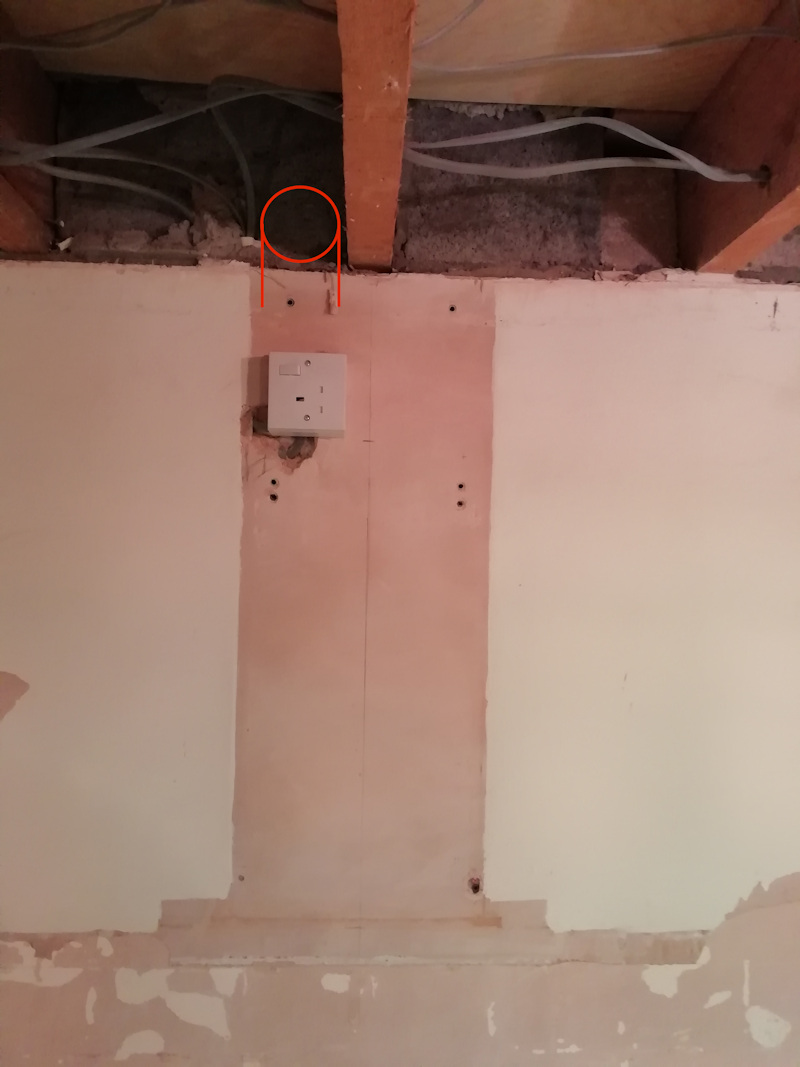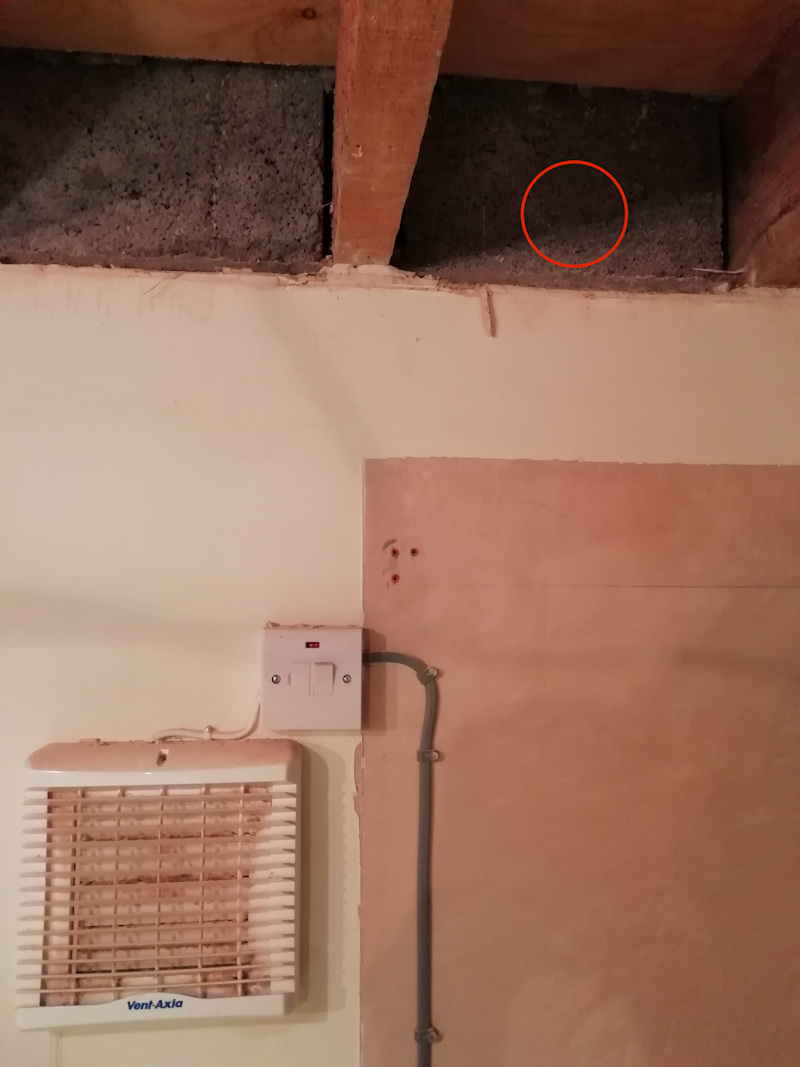Hi
I'm in the middle of replacing my kitchen. The previous owners had an extractor which didn't extract to the outside, just used charcoal filters. The reason they didn't vent outside appears to be because a joist is right in the middle of the chimney.
As I have the ceiling down I'm wondering if I can get away with using 4" ducting (this potentially could fit depending on what fittings are at the top of the chimney) down the side of the joist rather than the usual 6" which the manufacturers state should be fitted?
Note the extractor hood will be on the internal wall and will need ducting to cross the kitchen between joists. I'd angle slightly so it went out centrally between the joists on the external wall.
I've attached a few pics hopefully to make it clearer


That way I could get rid of the ugly Vent-Axia!
I'm in the middle of replacing my kitchen. The previous owners had an extractor which didn't extract to the outside, just used charcoal filters. The reason they didn't vent outside appears to be because a joist is right in the middle of the chimney.
As I have the ceiling down I'm wondering if I can get away with using 4" ducting (this potentially could fit depending on what fittings are at the top of the chimney) down the side of the joist rather than the usual 6" which the manufacturers state should be fitted?
Note the extractor hood will be on the internal wall and will need ducting to cross the kitchen between joists. I'd angle slightly so it went out centrally between the joists on the external wall.
I've attached a few pics hopefully to make it clearer


That way I could get rid of the ugly Vent-Axia!

